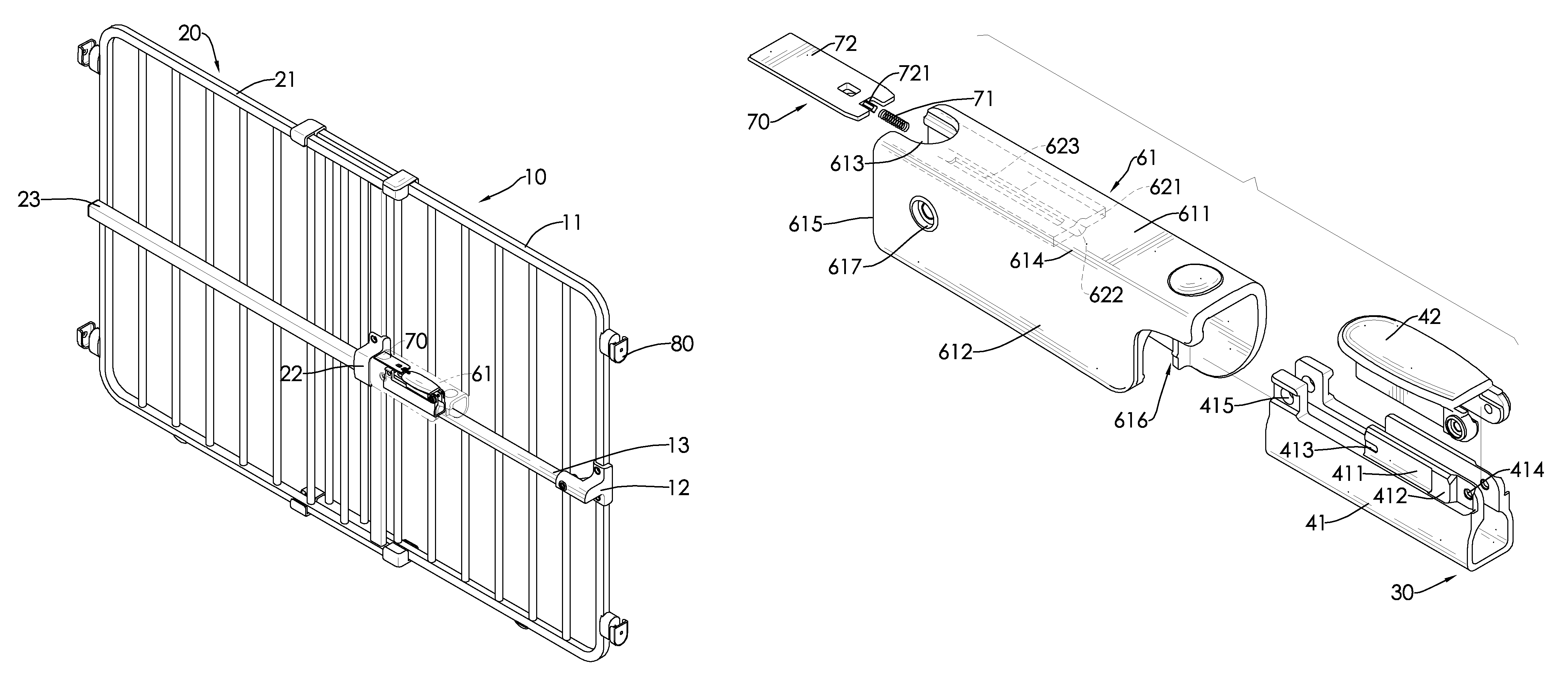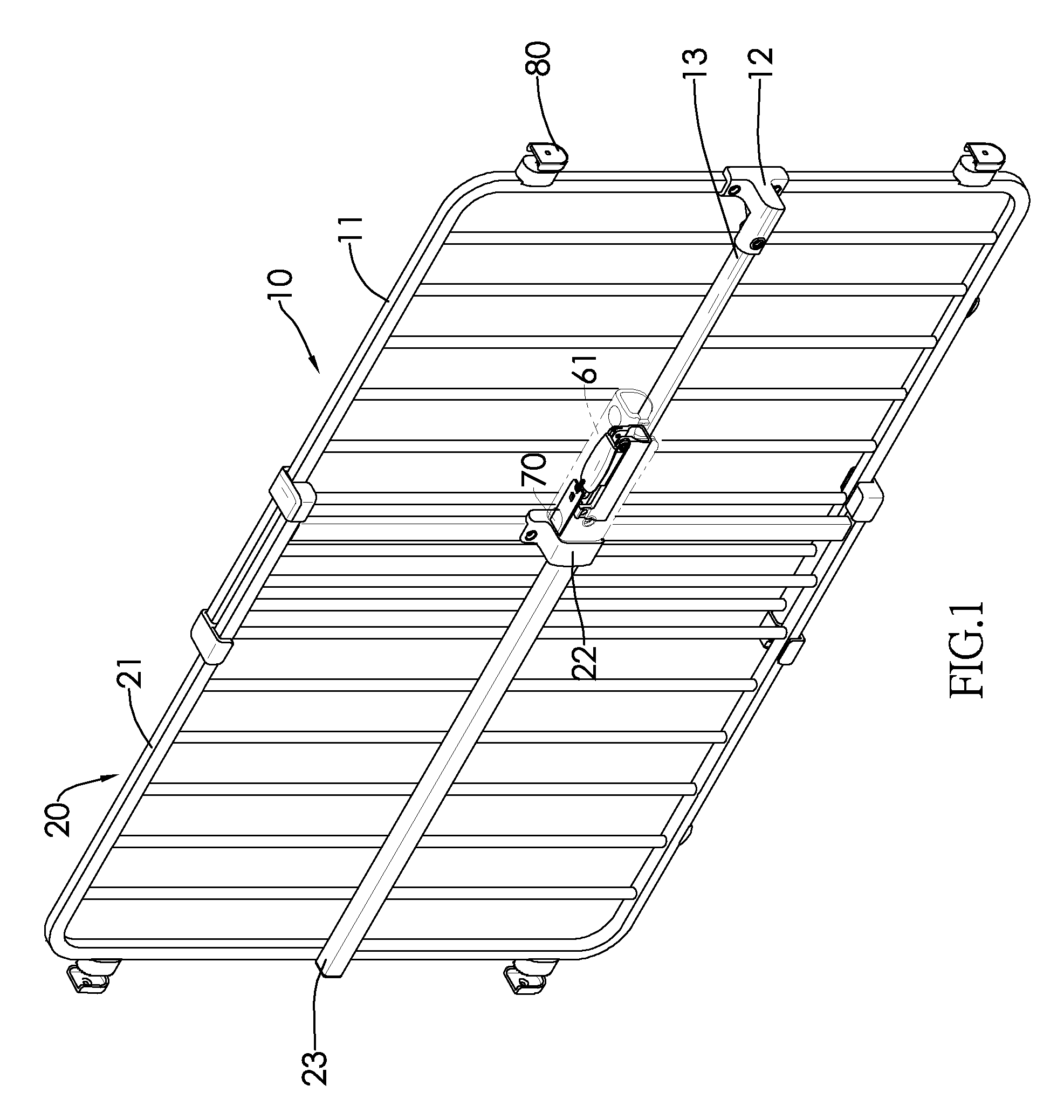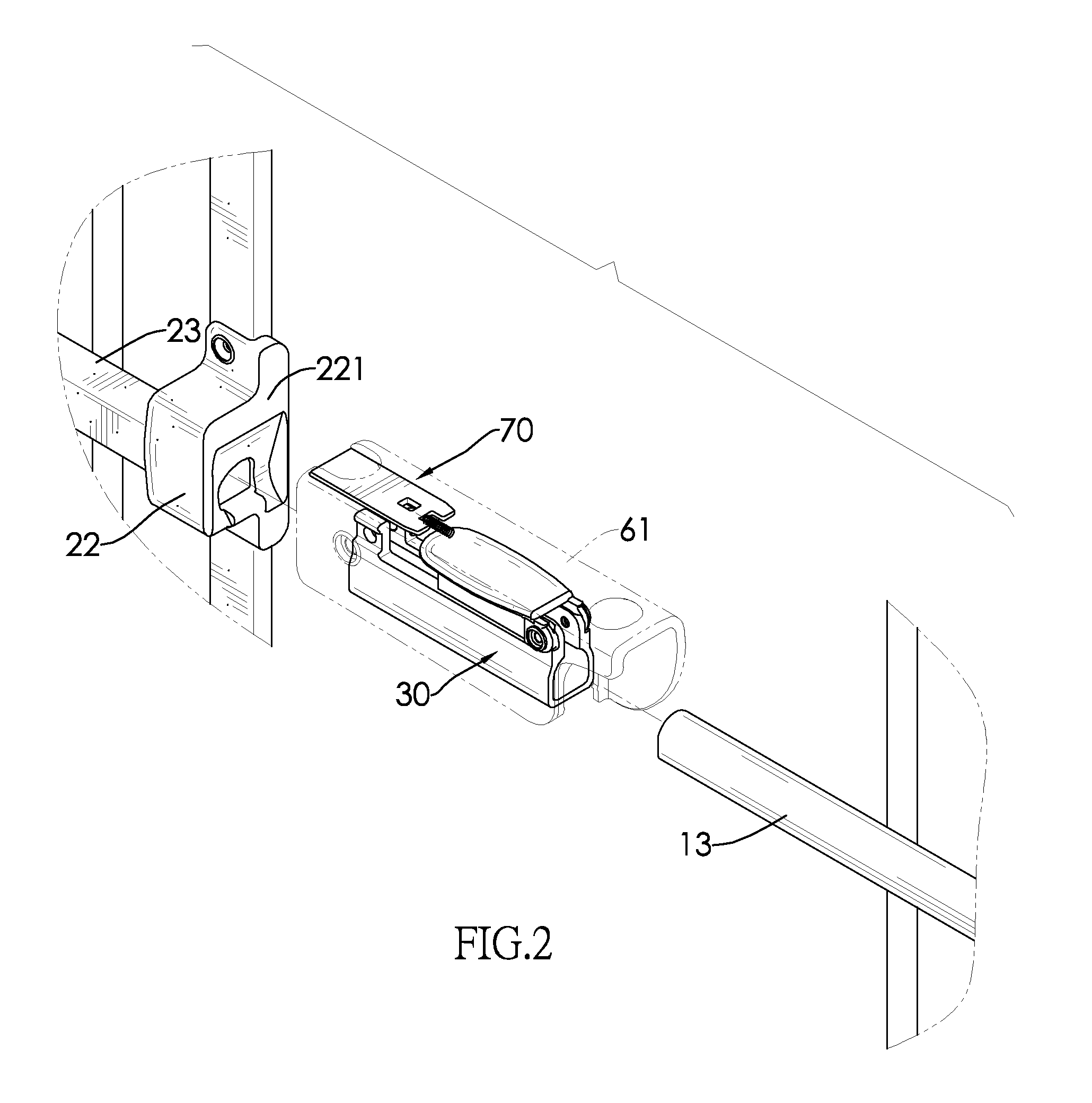Safety gate
a safety gate and gate body technology, applied in the field of safety gates, can solve the problems of inconvenience in use, the difficulty of only one person to independently mount the conventional safety gate, etc., and achieve the effect of convenient mounting, convenient and convenient loosing
- Summary
- Abstract
- Description
- Claims
- Application Information
AI Technical Summary
Benefits of technology
Problems solved by technology
Method used
Image
Examples
Embodiment Construction
[0027]With reference to FIGS. 1 and 2, a safety gate in accordance with the present invention has a first frame assembly 10, a second frame assembly 20, a shaft fixing assembly 40, a stretcher assembly 61, an anti-pinch assembly 70 and multiple contact pads 80.
[0028]With reference to FIGS. 1 to 5, the first frame assembly 10 has a first frame 11, a first shaft rack 12 and a first shaft 13. The first shaft rack 12 is mounted on one side edge of the first frame 11 in a transverse direction. The first shaft 13 is securely mounted on the first shaft rack 12 and has a non-circular section.
[0029]The second frame assembly 20 is adjacent to the other side edge of the first frame 11 in the transverse direction and has a second frame 21, a second shaft rack 22 and a second shaft 23. The second frame 21 is mounted between the first frame 11 and the first shaft 13. A slider is mounted on each of the top edges and the bottom edges of the first frame 11 and second frame 21 so that the first frame...
PUM
 Login to View More
Login to View More Abstract
Description
Claims
Application Information
 Login to View More
Login to View More - R&D
- Intellectual Property
- Life Sciences
- Materials
- Tech Scout
- Unparalleled Data Quality
- Higher Quality Content
- 60% Fewer Hallucinations
Browse by: Latest US Patents, China's latest patents, Technical Efficacy Thesaurus, Application Domain, Technology Topic, Popular Technical Reports.
© 2025 PatSnap. All rights reserved.Legal|Privacy policy|Modern Slavery Act Transparency Statement|Sitemap|About US| Contact US: help@patsnap.com



